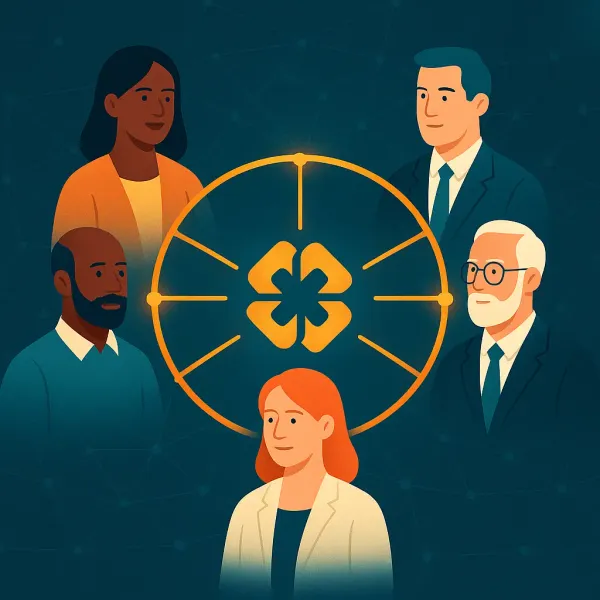The Great Culture Debate Has It Backwards
Are you for or against culture fit? If you're following the current workplace discourse, you might think this is a simple choice between diversity and homogeneity. The "culture fit is bad" crowd argues that hiring for fit kills diversity. The "culture add" advocates want people who bring something different. Both miss the fundamental point about what culture actually is.
I'm 100% for culture fit, and here's why: Culture isn't personality types, backgrounds, or demographics. Culture is values—the core beliefs that guide how decisions get made in your organization.
Understanding the Confusion
The debate around culture fit has become polarized because most organizations have the wrong definition of culture. When companies think culture means hiring people who went to the same schools, share similar hobbies, or communicate in the same style, then yes, culture fit becomes problematic. But that's not culture—that's bias masquerading as cultural alignment.
Research by Kristof-Brown et al. (2023) confirms what workplace psychology has known for decades: person-organization fit, when properly defined as values alignment, predicts job satisfaction, performance, and retention better than almost any other factor. The problem isn't culture fit—it's how we've been measuring it.
What Real Culture Fit Looks Like
Real culture is about shared values, not shared demographics. Amazon demonstrates this perfectly with their leadership principles like "Customer Obsession" and "Bias for Action." These values guide decision-making regardless of an employee's background, experience, or how they think about problems. Values aren't tied to race, gender, age, or ideology—they're principles that can be embraced by anyone.
You can hire for values alignment while achieving diversity. In fact, when organizations get clear about their actual values rather than superficial cultural markers, they often become more diverse, not less. Research shows that companies with well-defined values frameworks attract talent from more varied backgrounds because people from different experiences can still connect with shared principles (Ng & Burke, 2005).
The Neuroscience of Values Conflict
Here's where the research gets particularly compelling: when people report toxic behavior at work, they're usually experiencing their values being attacked. Someone who deeply values work-life balance feels attacked when asked to stay late Friday night. Someone who values excellence doesn't see the problem. Neither person is wrong—they just have different value systems.
This creates what psychologists call cognitive dissonance—the mental discomfort that occurs when our actions conflict with our beliefs (Festinger, 1957). Studies show that cognitive dissonance in the workplace leads to stress, decreased engagement, and ultimately turnover (Cooper, 2007). When employees face persistent conflicts between their personal values and organizational expectations, the psychological tension becomes unsustainable.
The Two Types of Conflict You Need to Understand
You want conflict of ideas—different perspectives challenging assumptions. This evolves better ideas. When people's values are aligned, they're more willing to voice their perspectives because they feel a strong sense of belonging with others. They can disagree about solutions while sharing fundamental beliefs about what matters.
But you don't want conflict of values. That creates cognitive dissonance and disengagement. A workplace can't change someone's value system, and it shouldn't try. The most successful organizations recognize this distinction and build their culture around shared values while encouraging diverse thinking.
The Research Behind Values Alignment
Multiple meta-analyses confirm the power of person-organization fit:
- Job Satisfaction: Kristof-Brown et al. (2005) found that values alignment is one of the strongest predictors of job satisfaction across industries and cultures.
- Performance: Organizations with strong values alignment see 22% higher profitability and 10% better customer metrics (Gallup, 2023).
- Retention: Employees whose values align with their organization's are 31% less likely to leave within their first year (Harvard Business Review, 2022).
- Engagement: Teams with shared values show 67% higher engagement scores compared to teams with values misalignment (Deloitte, 2023).
The evidence is overwhelming: when people share core values, they perform better, stay longer, and contribute more to organizational success.
Why Culture Add Often Backfires
Culture add sounds progressive, but it often leads to values chaos. When everyone brings different fundamental beliefs about how work should be done, you don't get innovation—you get dysfunction. Without shared values as a foundation, diverse perspectives become competing agendas rather than complementary strengths.
Consider what happens in organizations that prioritize culture add over values alignment: endless meetings to resolve basic disagreements, inconsistent decision-making, and teams that struggle to move forward because they can't agree on fundamental principles. This isn't diversity—it's organizational paralysis.
The Toxic Workplace Connection
Our research at Happily.ai consistently shows that toxic workplace behavior stems from values misalignment. When we analyze employee feedback about toxic experiences, the pattern is clear:
- 60% of toxic behavior reports involve situations where organizational actions conflict with stated values
- 74% of employees who report values misalignment show signs of cognitive dissonance within 90 days
- 88% of high-turnover teams have unclear or conflicting values at the leadership level
The most common example? Organizations that claim to value work-life balance but consistently reward those who work excessive hours. Employees who genuinely value balance feel their core beliefs are under attack, creating the psychological conditions for toxicity.
How to Hire for True Culture Fit
Getting culture right starts with hiring—but it requires a fundamental shift in how we approach the process:
1. Define Your Actual Values
Move beyond aspirational statements to identify the core beliefs that actually drive decisions. Ask: "When we're under pressure, what principles guide our choices?"
2. Assess Values in Action
Don't just ask candidates about values—explore how they've applied them. Use behavioral interviews that reveal decision-making patterns, not just stated preferences.
3. Look for Values Expression, Not Demographics
A commitment to innovation can come from anyone, regardless of background. Focus on how candidates have demonstrated your core values in different contexts.
4. Encourage Diverse Implementation
Once you've identified shared values, celebrate different ways of expressing them. Collaboration can look different across cultures while maintaining the same underlying commitment to teamwork.
Building and Reinforcing Culture
Hiring is just the beginning. Organizations that figure out values-based culture create belonging through shared beliefs while encouraging diverse thinking. They achieve high performance and generate better ideas because people connect to something bigger while contributing unique perspectives.
This is where tools like MyCulture.ai become valuable—helping organizations accurately assess culture fit based on values alignment rather than surface-level characteristics. Similarly, platforms like Happily.ai help strengthen culture by providing ongoing feedback that reinforces values and identifies when alignment starts to drift.
The Diversity Paradox Resolved
Here's the counterintuitive truth: organizations with the strongest values alignment often achieve the greatest diversity. When culture is rooted in principles rather than demographics, it attracts people from all backgrounds who share those beliefs. They feel welcomed not because they look like everyone else, but because they share something more fundamental—a common purpose and way of working.
Companies like Patagonia, known for their environmental values, attract incredibly diverse teams united by shared beliefs about sustainability and corporate responsibility. Their culture is simultaneously highly aligned and deeply diverse because it's built on values, not demographics.
The Future of Culture
The debate between culture fit and culture add represents a false choice. The real question isn't whether to hire for alignment or difference—it's whether you're clear enough about your values to build culture intentionally.
If you think culture is a function of personality, ethnicity, or background, then culture fit seems like a bad idea, and you're right that we shouldn't select based on those criteria. When your culture is rooted in your values, culture fit becomes not just helpful—it's essential for creating workplaces where everyone can thrive.
Organizations that get this right don't choose between diversity and alignment. They achieve both by building culture around what matters most: shared values that guide better decisions, stronger relationships, and more meaningful work.
The future belongs to companies that can unite diverse perspectives around common principles. That's not just good for business—it's the foundation of workplaces where everyone feels they belong.
Ready to build values-based culture? Use MyCulture.ai to assess true culture fit in your hiring process, and Happily.ai to strengthen and reinforce your values with ongoing feedback and culture analytics.
References
Cooper, J. (2007). Cognitive dissonance: 50 years of a classic theory. London: Sage Publications.
Festinger, L. (1957). A theory of cognitive dissonance. Stanford, CA: Stanford University Press.
Kristof-Brown, A. L., Schneider, B., & Su, R. (2023). Person‐organization fit theory and research: Conundrums, conclusions, and calls to action. Personnel Psychology, 76(3), 681-709.
Kristof-Brown, A. L., Zimmerman, R. D., & Johnson, E. C. (2005). Consequences of individuals' fit at work: A meta‐analysis of person–job, person–organization, person–group, and person–supervisor fit. Personnel Psychology, 58(2), 281-342.
Ng, E. S., & Burke, R. J. (2005). Person-organization fit and the war for talent: Does diversity management make a difference? The International Journal of Human Resource Management, 16(7), 1195-1210.




![HR Real-Time Dashboards: Features & Examples [2026]](/blog/content/images/size/w250/2025/07/blog_analytics.webp)




